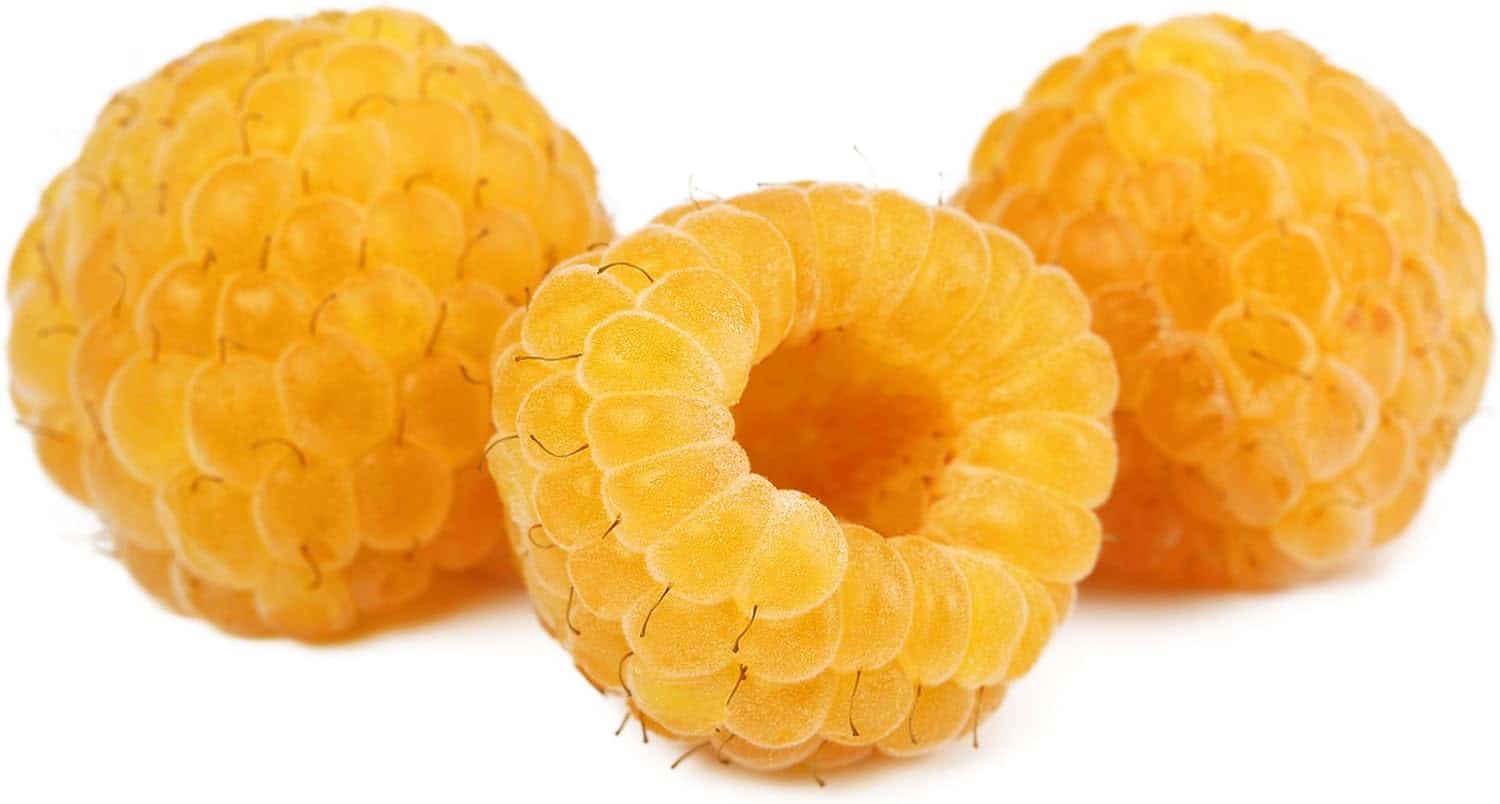Are your raspberry bushes looking overgrown and tangled? It might be time to give them a good pruning. Pruning raspberries is in the spring an important part of maintaining healthy plants and maximizing fruit production. In this article, we’ll go over the basics of how to prune raspberries in the spring to keep your bushes healthy and productive.
This post may contain affiliate links.
First, let’s talk about why pruning is important for raspberries. Pruning helps to remove old, diseased, or damaged canes, which can harbor pests and diseases.
It also encourages new growth and increases airflow and sunlight penetration, which can improve fruit quality and reduce the risk of fungal diseases. By pruning your raspberry bushes in the spring, you can help them produce more and better fruit throughout the growing season.
Understanding Raspberry Plants and Their Growth Cycle
Raspberry plants are a popular choice among gardeners due to their sweet, juicy fruit and ease of maintenance. However, to ensure a bountiful harvest, it’s important to understand the growth cycle of raspberry canes and how to properly prune them.
Identifying Raspberry Varieties
There are two main types of raspberry plants: summer-bearing and fall-bearing. Summer-bearing raspberries produce fruit on second-year canes, while fall-bearing raspberries produce fruit on the current year’s growth.
It’s important to know which type of raspberry plant you have in order to properly prune them.
Within these two types, there are also different varieties of raspberries, each with their own unique characteristics. Some popular varieties include:
- Heritage: A summer-bearing variety known for its large, sweet berries.
- Caroline: A fall-bearing variety that produces fruit in late summer to early fall.
- Anne: A fall-bearing variety with large, golden berries.
Life Cycle of Raspberry Canes
Raspberry canes have a two-year life cycle consisting of primocanes and floricanes. Primocanes are the first-year growth and do not produce fruit. Floricanes are the second-year growth and produce fruit.
In the spring, new growth emerges from the base of the plant as primocanes. These canes will grow throughout the summer and into the fall, eventually becoming floricanes the following year.
It’s important to prune out any damaged or diseased canes during the growing season to promote healthy growth.
In the winter, floricanes should be pruned back to the ground to make room for new growth. This allows for better air circulation and light penetration, leading to healthier plants and a better harvest.
By understanding the growth cycle of raspberry canes and identifying different varieties, you can properly prune your raspberry plants to ensure a bountiful harvest of sweet, juicy fruit.
The Basics of Pruning Raspberries
If you want to keep your raspberry bushes healthy and productive, pruning is essential. Pruning raspberries in spring is particularly important, as it can help to prevent diseases and encourage new growth.
In this section, we’ll cover the basics of pruning raspberries, including why it’s important and what tools you’ll need.
Why Pruning is Essential
Pruning raspberry bushes removes any dead or diseased wood, which can help to prevent the spread of disease throughout the plant. It also encourages new growth, which can lead to a healthier and more productive plant.
Additionally, pruning can help to keep the plant’s size under control, making it easier to manage and harvest.
Tools Needed for Pruning
To prune raspberries, you’ll need a few basic tools. These include:
- Gardening gloves: These will protect your hands from thorns and other hazards while you work.
- Loppers: Use loppers to remove any thick or woody canes.
- Pruning shears: Use pruning shears to remove any smaller canes or branches.
Before you start pruning, make sure your tools are clean and sharp. This will make the process easier and more effective.
Pruning Techniques for Different Raspberry Types
When it comes to pruning raspberries, it’s important to understand the differences between the three main types: summer-bearing, fall-bearing, and ever-bearing. Each type requires a slightly different approach to pruning in order to maximize fruit production and ensure healthy canes.
Summer-Bearing Raspberries
Summer-bearing raspberries produce fruit on second-year canes, which means that after the first year of growth, the canes will not produce fruit again. To prune summer-bearing raspberries, follow these steps:
- In late winter or early spring, remove all dead, damaged, or diseased canes at ground level.
- Thin out any weak or spindly canes, leaving only the strongest and healthiest canes.
- Cut back the remaining canes to about 5-6 feet tall, leaving about 5-7 buds per cane. This will encourage the canes to produce lateral branches, which will bear fruit in the summer.
Fall-Bearing Raspberries
Fall-bearing raspberries produce fruit on first-year canes, which means that they can be pruned differently than summer-bearing raspberries. To prune fall-bearing raspberries, follow these steps:
- In late winter or early spring, remove all dead, damaged, or diseased canes at ground level.
- Thin out any weak or spindly canes, leaving only the strongest and healthiest canes.
- Cut back the remaining canes to about 3-4 feet tall, leaving about 5-7 buds per cane. This will encourage the canes to produce lateral branches, which will bear fruit in the fall.
Ever-Bearing Varieties
Ever-bearing raspberries produce fruit on both first and second-year canes, which means that they require a slightly different pruning technique than either summer-bearing or fall-bearing raspberries. To prune ever-bearing raspberries, follow these steps:
- In late winter or early spring, remove all dead, damaged, or diseased canes at ground level.
- Thin out any weak or spindly canes, leaving only the strongest and healthiest canes.
- For a one-crop system, cut back all canes to about 3-4 feet tall, leaving about 5-7 buds per cane. This will encourage the canes to produce lateral branches, which will bear fruit in the fall.
- For a two-crop system, cut back all canes to about 3-4 feet tall in the late winter or early spring. After the fall crop has been harvested, cut back the same canes again to about 5-6 feet tall, leaving about 5-7 buds per cane. This will encourage the canes to produce lateral branches, which will bear fruit in the summer.
By following these pruning techniques for different raspberry types, you can ensure healthy canes and maximize your fruit production.
Maintaining Raspberry Health After Pruning
Now that you have pruned your raspberry bushes, it’s important to take steps to maintain their health and ensure a bountiful harvest. Here are some tips to keep your raspberries healthy and productive.
Mulching and Fertilizing
Mulching your raspberry bushes is important for several reasons. It helps to retain moisture in the soil, suppress weeds, and regulate soil temperature.
You can use a variety of materials for mulch, including straw, leaves, or wood chips. Spread the mulch around the base of the plants, being careful not to cover the canes.
Fertilizing your raspberry bushes is also important for their health and productivity. You can use a balanced fertilizer, such as a 10-10-10, in the spring before new growth appears.
Be sure to follow the instructions on the package for application rates. You can also use organic fertilizers, such as compost or manure, to provide nutrients to the soil.
Controlling Pests and Diseases
Pests and diseases can damage your raspberry bushes and reduce their productivity. Here are some tips to help control common problems:
- Roots and Suckers: Remove any suckers that sprout from the base of the plant, as they can compete with the main plant for nutrients. Also, keep an eye out for any signs of root rot, which can be caused by overwatering or poor drainage.
- Spur Blight: This fungal disease can cause canes to turn brown and die. To prevent it, remove any infected canes and prune back healthy canes to promote air circulation.
- Anthracnose: This fungal disease can cause leaves to turn yellow and fall off. To prevent it, remove any infected canes and prune back healthy canes to promote air circulation.
By following these tips, you can help ensure the health and productivity of your raspberry bushes.
Maximizing Raspberry Yields
If you want to enjoy a bountiful raspberry harvest, it’s essential to prune your plants each spring. Proper pruning techniques can help maximize yields, increase fruit production, and improve berry size. Here are some tips to help you get the most out of your raspberry bushes.
Proper Timing and Techniques
The best time to prune your raspberry bushes is in the early spring, before new growth begins. This allows you to remove any dead or damaged canes and thin out the remaining canes to encourage new growth.
When pruning, be sure to use sharp, clean pruning shears and make clean cuts at a 45-degree angle.
To encourage maximum yield, it’s important to thin out your raspberry bushes. This involves removing some of the older, weaker canes to allow more light and air to reach the remaining canes. Thinning also helps prevent overcrowding, which can lead to disease and pest problems.
Thinning for Better Harvests
To thin your raspberry bushes, start by removing any canes that are dead, damaged, or diseased. Next, look for any canes that are thinner or weaker than the others and remove them as well. You should aim to leave about 4-6 strong, healthy canes per foot of row.
When thinning, it’s important to remove the canes at ground level, rather than just cutting them back. This helps prevent disease and encourages new growth from the base of the plant.
By following these proper timing and thinning techniques, you can help maximize your raspberry yields and enjoy a bountiful harvest of delicious, juicy berries.
Frequently Asked Questions
What is the best time to prune raspberry bushes in the spring?
The best time to prune raspberry bushes in the spring is before new growth appears. This usually falls between late winter and early spring, depending on the climate. It’s important to prune before new growth appears so that you don’t accidentally remove any new growth.
Can you explain the proper technique for pruning everbearing raspberries after winter?
To prune everbearing raspberries after winter, start by removing all dead, damaged, or diseased canes at the base of the plant. Then, cut back the remaining canes to a height of 12-18 inches. This will encourage new growth and a higher yield.
How should I handle pruning overgrown raspberry bushes in the springtime?
If you have overgrown raspberry bushes, it’s best to tackle them in stages over a few years. In the first year, remove all dead, damaged, or diseased canes at the base of the plant.
Then, cut back the remaining canes to a height of 4-5 feet. In the following years, continue to remove any dead, damaged, or diseased canes and cut back the remaining canes to a height of 4-5 feet.
Is there a difference in pruning methods for floricane raspberries during the spring?
Yes, there is a difference in pruning methods for floricane raspberries during the spring. Floricane raspberries produce fruit on second-year canes, so you should only prune the canes that have already fruited. Cut these canes back to the ground, leaving the new, first-year canes intact.
What are the consequences of not pruning raspberry plants in the spring?
If you don’t prune raspberry plants in the spring, they can become overcrowded and produce smaller fruit. Overcrowded plants are also more susceptible to disease and pests.
Pruning helps to increase air circulation and sunlight penetration, which can lead to healthier plants and higher yields.
How far back can I cut my raspberry plants when doing a spring prune?
When doing a spring prune, you can cut back your raspberry plants as far as you need to in order to remove dead, damaged, or diseased canes.
However, it’s important to leave some healthy canes intact so that the plant can produce new growth and fruit. As a general rule, you should aim to remove no more than one-third of the plant’s total canes.
Follow my gardening board on Pinterest.





